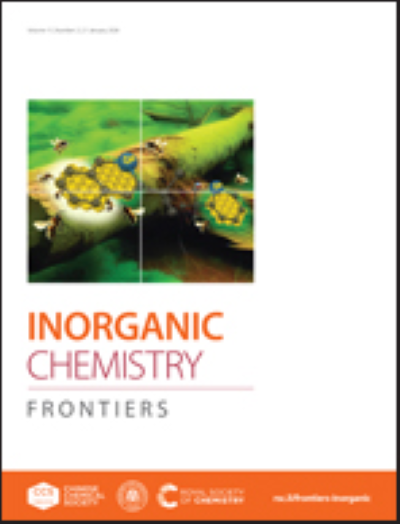Stabilization of COOH* intermediate through hydroxylation engineering for remarkably efficient photocatalytic CO2 reduction
IF 6.1
1区 化学
Q1 CHEMISTRY, INORGANIC & NUCLEAR
引用次数: 0
Abstract
The efficiency of CO2 photoreduction is significantly constrained by uncontrollable reaction intermediate as well as the weak adsorption and tough activation of CO2. Herein, we reported a surface modulation strategy, via hydroxyl (-OH) modification to tune the surface state of rich oxygen vacancy SrTiO3 (STO), which could efficiently optimize the structural attributes of STO, facilitating the robust generation of intermediate COOH* and enhancing the surface affinity of catalyst for CO2 adsorption and activation. Therefore, the CO evolution rate of the STO-OH-5 (90 μmol⋅g-1⋅h-1) catalyst is 2.6 times higher than that of the original STO (34 μmol⋅g-1⋅h-1), outperforming most of the reported photocatalysts. This study elucidates the impact of surface modulation on the photocatalytic performance of STO and presents a viable strategy for the development of high-performance nanomaterial photocatalysts for CO2 conversion.求助全文
约1分钟内获得全文
求助全文
来源期刊

Inorganic Chemistry Frontiers
CHEMISTRY, INORGANIC & NUCLEAR-
CiteScore
10.40
自引率
7.10%
发文量
587
审稿时长
1.2 months
期刊介绍:
The international, high quality journal for interdisciplinary research between inorganic chemistry and related subjects
 求助内容:
求助内容: 应助结果提醒方式:
应助结果提醒方式:


